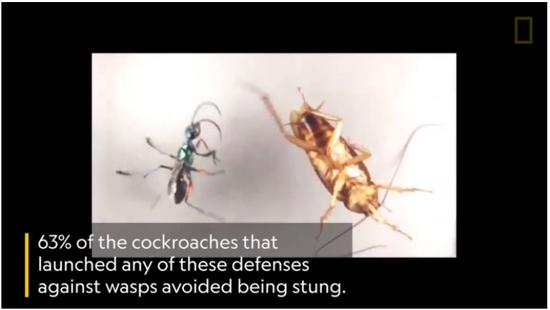At around age 10, I spotted a cockroach on the kitchen counter and grabbed the closest thing near me: a coffee pot, which I brought down on the head of the bug and then found myself standing there, holding nothing but the glass handle. “I’m sorry, Mom,” I said about the broken flask. “But at least I got the roach.”
German cockroaches were a regular, omnipresent part of growing up in a trailer park in Phoenix, Arizona. Nothing seemed to deter them: no amount of poisons, electric zappers, or bug bombs. It wasn’t until we moved to a house that my family finally rid ourselves of our six-legged plague.
Tens of thousands of people in the U.S. understand the frustration of bad roach infestations. And there may be a good reason why these bugs can be so hard to control. A burgeoning body of data suggests some German roach populations in the country have evolved resistance to pesticides, essentially rendering the chemicals useless.
A recent study in the Journal of Economic Entomology, for instance, shows that German cockroaches in some southern California residential units can survive exposure to five types of commonly used pesticides.
That’s a concern, because serious roach infestations can cause health issues, such as asthma or allergies, says study leader Dr. Chow-Yang Lee, an urban entomology professor at the University of California, Riverside. At least 11 different allergens are associated with Blattella germanica, which can also spread bacteria such as Salmonella. The stress of a cockroach infestation can take a toll on a person’s mental health.
While other types of roaches can infest human dwellings, invasive German roaches are by far the most problematic, Lee says. There’s some debate as to whether the bugs originated in Africa or Southeast Asia, but nonetheless, the hardy species has spread worldwide through international shipping, and is now the most common cockroach on Earth. (Carl Linnaeus, the Swedish naturalist, coined the name Blattella germanica because he was sent samples of the insects in the mail from Germany in the 1770s.)
True to its scrappy reputation, of the more than 4,500 known cockroaches, “only German cockroaches are known to be capable of developing resistance to insecticide,” Lee says—an example of how humans are driving the evolution of the pests around us. (Read how many of the world’s insects are declining because of chemical use.)
But we may not need to keep pushing roaches to evolve defenses to our pest controls.
Scientists are also studying more effective approaches to controlling cockroaches in human areas, such as a multi-system approach that includes using essential oils such as limonene, a citrus component whose strong smell deters roaches.
A never-ending story of resistance
Lee and his colleagues focused on how German roaches in four cities in southern California respond to gel bait insecticides, some of the most used consumer products to control the insects in the U.S.
Using vacuum cleaners and traps, they collected hundreds of roaches—mostly using vacuum cleaners—from public housing residences around Los Angeles, San Diego, Vista, and San Jose. Lee says that because people in these areas often cannot afford professional extermination services, they tend to apply more and more store-bought pesticides.
This creates a feedback loop. Greater exposure creates more opportunities for cockroaches that can survive the pesticide’s effects to survive and then breed, leading to a new, tougher generation of pesticide-resistant roaches. (Read more about how cockroach genes help them thrive.)
Lee calls it “a never-ending story [of] insecticide resistance.”
The research team next brought the roaches back into their California lab, then, in separate trials, exposed the animals to six common, over-the-counter pesticides. They repeated the same experiment with dozens of lab-reared German roaches that had never been exposed to bug-killing chemicals.
The control roaches quickly died. But in five of the six trials, the pesticides failed to kill the captured roaches, with most surviving after two weeks. Only one pesticide—abamectin—effectively killed the captured roaches. However, research in 2019 showed that roaches can develop higher resistance to abamectin in just two generations, or about a year.
Most insecticides target a specific part of the bug’s body, such as its nervous system, says study co-author Shao-Hung Dennis Lee, a Ph.D. student in Lee’s lab. “So a lot of resistant cockroaches will have a [genetic] mutation in this area that is attacked, making it less sensitive to the insecticide.”
Humans can also suffer from indoor pesticide use. Pesticide residues, which are “widespread” in American homes, can cause headaches, dizziness, and nausea, as well as increase the risk of cancer, according to the U.S. Environmental Protection Agency.

Evolution in action
Overall, the research shows that trying to combat German cockroaches with pesticides is not only failing, but also creating even stronger animals, Shao-Hung Dennis Lee says. “If we weren't applying insecticides, none of these things would be occurring. So it’s all a human-caused selection process.”
Our shaping of cockroach evolution reaches back centuries. When the species first arrived in Europe, many died in the harsh winters. “But some survived because they basically survived indoors,” Chow-Yang Lee says. “Probably also during this period they lost their ability to fly.”
Another factor that drove their success was that the insects evolved the ability to eat pretty much anything. (Read how cockroaches have neighborhoods, too.)
German cockroaches’ digestive systems have “a gigantic array of enzymes that help them to metabolize everything,” says Seun Oladipupo, an entomologist and Ph.D. student at Auburn University in Alabama, who studies sustainable pest-management strategies. “They’re able to naturally detoxify all the things we throw at them.”
Oladipupo is investigating ways to control German roaches using concentrated plant extracts called essential oils. In a 2020 experiment, Oladipupo combined different essential oils with hydrogel baits and found that they reduced the ability of German cockroaches to breed and shortened their life spans, even at sublethal doses. One essential oil, called carvacrol, reduced the longevity of male roaches by at least 34 percent.

The crushed rock powder kills insects by dehydrating them.
PHOTOGRAPH BY HELIN LOIK-TOMSON, GETTY IMAGES
Essential oils are still technically pesticides, but they’re less toxic to bugs and humans, and it’s also less likely that roaches will develop resistance to them. That’s because these chemicals act on multiple sites in a roach’s body, compared with many pesticides, which have specific targets, Oladipupo says.
Other products also hold promise for less-toxic pest control, such as diatomaceous earth, a powder of naturally occurring sedimentary rock that can dehydrate insects such as cockroaches, leading to their deaths.
Integrated approach
But Oladipupo cautions interventions such as essential oils are not “a standalone option. The answer is not chemical, it's a multi-system approach to managing insect pests.”
This is known as integrated pest management, which combines different strategies such as rotating, reducing, or eliminating pesticide use. But it can include practical advice, too. For instance, Oladipupo recommends keeping the places roaches tend to seek out—mainly kitchens and bathrooms—clean and dry.
Because roaches are especially attracted to pet food, it’s also important to store pet food in an air-tight container when it’s not being used. When it’s mealtime, experts advise keeping pet food bowls raised off the ground or buying a bug-deterring bowl with a moat of water around the food, which prevents the insects from accessing it.
Chow-Yang Lee also suggests learning more about wild roaches, many of which play beneficial roles in the environment. They can act as decomposers, breaking down leaves on the rainforest floor. Some even pollinate flowers. Others are stellar parents.
Next, both Oladipupo and Shao-Hung Lee plan to study the biological mechanisms of resistance in roaches, such as studying their microbiome. (Read how bugs and spiders keep New York City clean by eating trash.)
What’s more, some cockroaches could actually help humans: Because they live in such dirty places, cockroach bodies contain molecules that can kill even the toughest bacteria. Studying how this process works could inform scientists how to combat antibiotic resistance in humans, a major scourge.
And with 17 million people dying each year due to bacterial infections, a cockroach could someday even save your life.
(The German cockroach is Earth's most populous cockroach species. PHOTOGRAPH BY NIGEL CATTLIN, NATURE PICTURE LIBRARY)
Link to original article on National Geographic's website.